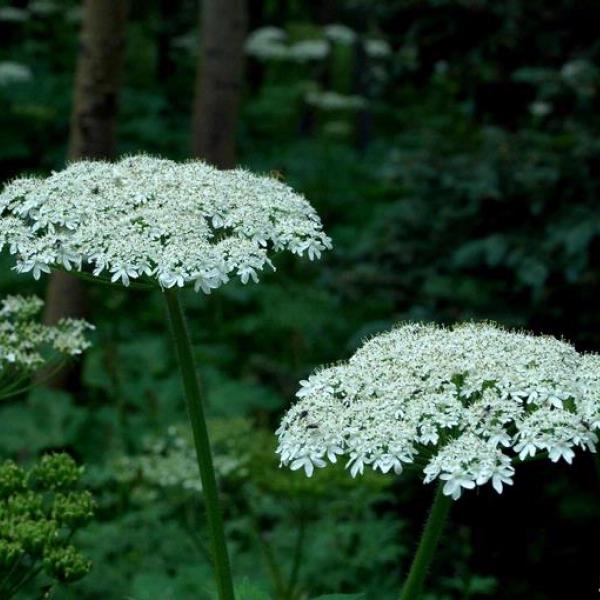
At the height of summer, numerous plants are in bloom. Also in bloom are the reported sightings of invasive plants. While many reports correctly identify common culprits, like Wild parsnip and Japanese knotweed, the suspected sightings of other invasive plants increase because of native plant look-a-likes.
One such case features the invasive plant Giant hogweed (Heracleum mantegazzianum). This plant, which reaches heights of 7-20 ft., with leaves up to 5 ft. across, flower clusters up to 2.5 ft. across, and stems with purple splotches, was introduced in the early 20th century, originating from the Caucasus Mountains and Asia.
When July rolls around in Vermont, Hogweed’s native plant look-a-like, American cow-parsnip (Heracleum maximum), is also flowering.
A few quick ways to determine what you’re observing include general size (Hogweed is truly towering), the shape of the flower clusters (Hogweed has an “umbrella” shape, American cow-parsnip is “flat topped”), presence of coarse white hairs at the base of the leaf stalk (American cow-parsnip lacks these coarse almost beard-like hairs), and number of rays within the flower cluster (Hogweed has 50 or more rays within the flower cluster while American cow-parsnip has only 15-30).
Here is a great resource to compare other native plant look-a-likes to hogweed from New York DEC.
While contact with both American cow-parsnip and Giant hogweed can cause a rash or burn, Hogweed sap can trigger a severe chemical reaction on exposed skin, and even cause blindness. Brushing up against this plant can transfer sap. This is more worrisome than exposure to Wild parsnip, Wild chervil or American cow-parsnip, where you have to break the plant tissue to come in contact with the sap. Giant hogweed is a federally listed noxious weed.
Check out this site if you’d like to learn more about the native plant, American cow-parsnip, the United States’ largest member of the carrot family.
Another great resource for curious minds is “Mistaken Identity” published by the Delaware Department of Agriculture. This document highlights many common invasive plants and their native plant look-a-likes.
Article Credit: Elizabeth Spinney, Invasive Plant Coordinator, VT Dept. Forests, Parks & Recreation
Photo Credit: W. Ciesla, American Cow-parsnip, CC BY-NC 3.0 US